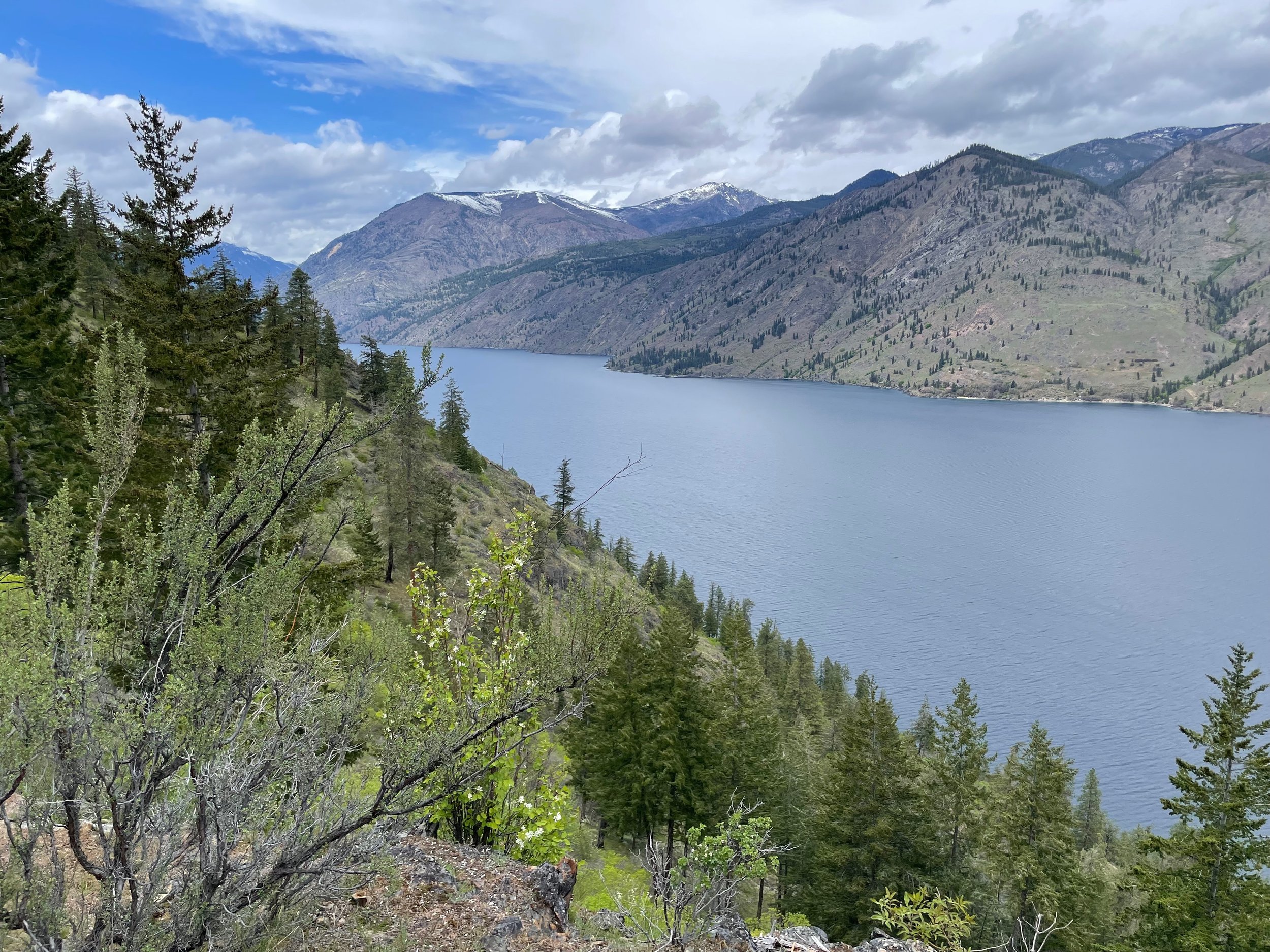Ski the Butte
Good Conditions + Right Gear = Great Memories
Yes, the Butte can be skied. It requires backcountry gear, a decent snow base, and a little effort, but the views and turns from the top are unforgettable. Here are some notes for the adventurous.
Conditions & Route
It may go without saying, but we need a good snow year in Chelan to ski the Butte. A solid foot (or more) of base is needed to mat down the grasses and cover small sage brush and rocks. As a rule, if there is 6-8 inches on the ground at the trailhead, you should be good to go.
The most consistent snow for skiing can be found in the pine bowl on the northeast flank of the Butte. This area is protected from wind and sun and has the best snow quality. Other slopes can also be excellent but have higher exposure and more variable conditions.
Skiing Route
I typically follow the Elephant Head trail up past the initial switchbacks and then head up the ridge line as shown above. There really isn’t a wrong way to gain the altitude.
Gear and Climb
Backcountry ski gear allows you to ascend the steep slopes with climbing skins. The heel of a backcountry (or randonnée) boot releases during the climbing phase. Skins are typically made with mohair and nylon. (Originally, they were made from the skins of seals.)
Those who enjoy running or long hikes may be predisposed to enjoy backcountry skiing. The experience of climbing involves hours of grunting up steep hills. Yes, the views generally improve as you climb, but the entire process is plain hard work.
You need to love exertion and time in nature as much as the ski turns themselves, because the brief reward of the descent goes quick - in the Butte’s case, in about twenty minutes.
All of this said, there is a moment of jubilant expectation after the climbing is done. Skins come off the skis, bindings are adjusted to lock the heel, and it is time for some turns!
View towards the top of the Butte from top of bowl.
The Descent
You will find a steady drop through the pine bowl with perfectly spaced trees to guide and define your turns.
One point of caution: do not descend into the ravine at the bottom of the bowl. As the ravine begins to appear, traverse left for several hundred yards. This will keep you from a challenging hike. (Note: every skier of the Butte likely drops too far the first time. I did.)
Another point of caution: beware of unmarked hazards. Steer clear from mysterious humps in the snow and other signs of buried obstacles. Given the wide range of possible snow depths and conditions, the best advice is to ski at a moderate speed and be nimble. Ski light on your feet. Imagine you are a deer.
Conclusion
Generally you will enjoy good skiing on the Butte, but not always. One year, my brother and I encountered a nasty trap crust. We turned back at the half way point and struggled to gracefully get back down to the car.
But the sun was out, the views great, and we tucked away another treasured memory. Hope you can tuck a few on the Butte as well too.
A video from a recent trip up the Butte.























